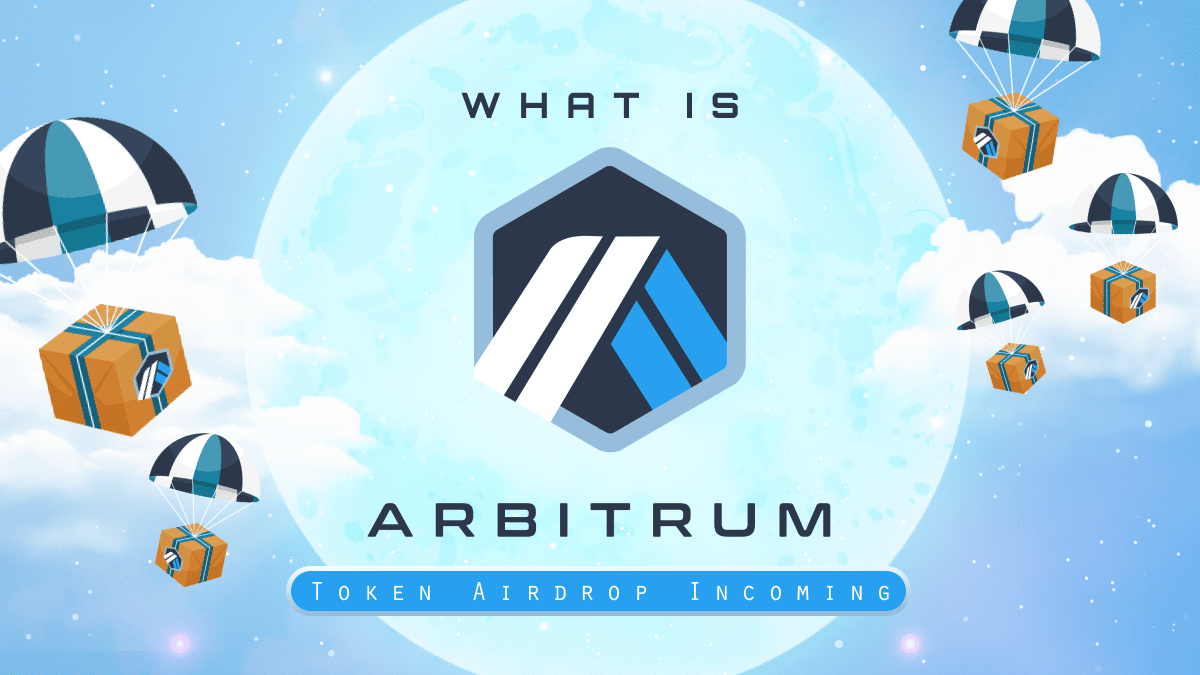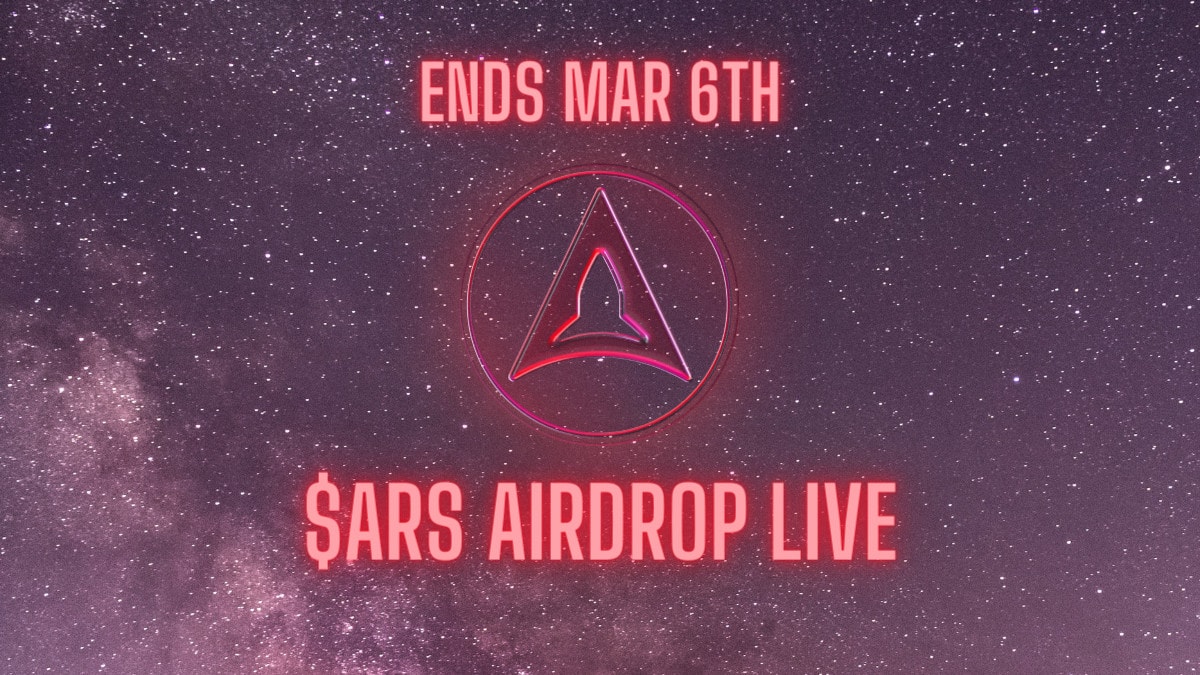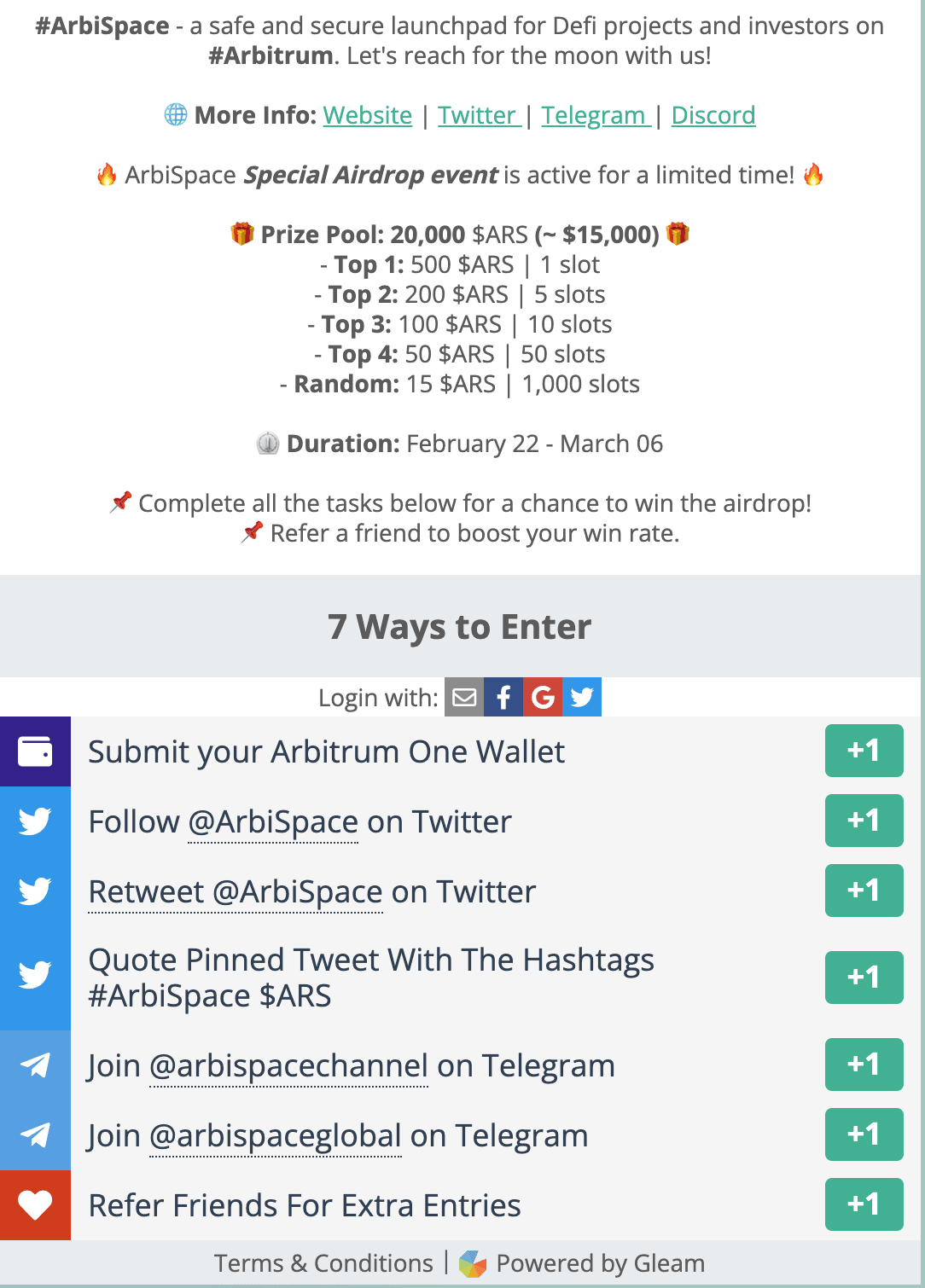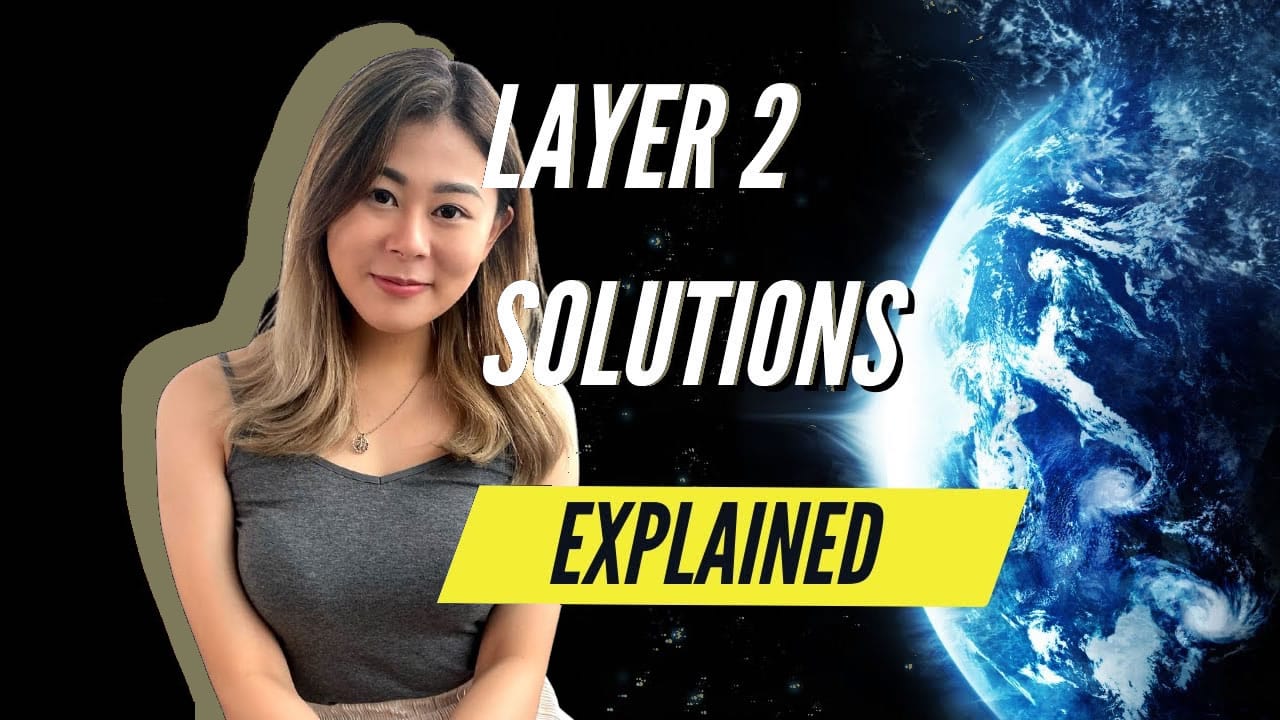Arbitrum will airdrop over 1 billion $ARB tokens to its protocol users on March 23, 2023. The snapshot was taken in February, and at least three criteria must be met to qualify for the airdrop. Find out if you’re eligible and how to claim your Arbitrum token airdrop below.
Check out our LayerZero Airdrop Guide for another highly anticipated token airdrop.
Arbitrum ($ARB) Airdrop Step-by-step Guide
Here’s how you can potentially claim your $ARB tokens faster and buy, sell, or trade your $ARB before everyone else:
- Make your own RPC endpoint on Alchemy.
- Pre-approve the token contract.
- Have sufficient ETH ready.
- Know where to trade $ARB.
See below for more details.
What is Arbitrum?
Arbitrum is a layer-2 scaling solution designed to lower network congestion and transaction costs of Ethereum by offloading tons of computation and data storage from the main chain. It does this via the use of optimistic rollup — transactions on Ethereum are bundled up and transferred to a proprietary sidechain on Arbitrum (a secondary blockchain connected to the main chain). The transactions are then processed and sent back to the main chain after validation.

What is an Optimistic Rollup?
The optimistic rollup is the core element of Arbitrum. For those who do not know what an optimistic rollup is, we got you covered with a simple explanation.
Optimistic rollups assume all transactions as valid, hence an “optimistic” outlook. There is a time period during which users can dispute any suspicious transactions contained in a bundle. If a fraudulent transaction is detected, a fraud proof is executed which basically runs the correct transaction computation using the data on the main chain.
Since optimistic rollups do not perform any computation by default, it offers massive improvements in scalability. On the downside, potential fraud challenges of optimistic rollups could lead to delays in transactions, since progress comes to a halt until it the dispute is resolved.
Arbitrum’s Version of Optimistic Rollup
To provide context, optimistic rollups are compatible with the Ethereum Virtual Machine (EVM) and Solidity, which allow developers to port Ethereum-native smart contracts to rollups or even use existing tooling to create new decentralized applications (DApp). But for Arbitrum, it has its own virtual machine called Arbitrum Virtual Machine (AVM).
Arbitrum’s AVM greatly improves optimistic rollups because it stores very little data on-chain for optimal scalability. Moreover, to address potential delays due to fraud challenges, the AVM uses pipelining to process multiple disputes, while verification nodes help speed up the process.
This is called multi-round fraud proofs. Arbitrum uses a fine-combing approach to verify fraud proofs. It focuses on a particular point of disagreement over transaction history. Additionally, layer-2 transactions are not entirely executed on the main chain, rendering gas block limits irrelevant. As a result, this translates to higher network performance.
Who is the Team behind Arbitrum?
Arbitrum is developed by Offchain Labs, a New York-based startup committed to building innovative Ethereum scaling solutions. The company originated from the computer science research department of Princeton University, co-founded in 2018 by Harry Kalodner, Steven Goldfeder, and Ed Felten.
In September 2021, Offchain Labs raised $120 million in a Series B funding round from the likes of Alameda Research, Pantera Capital, Lightspeed Venture Partners, and many other major crypto venture capitals. The team has since then expanded to a global community of developers, academics and operators, with deep experience in cryptography, decentralized systems, and game theory.
Leading DApps on Arbitrum Ecosystem
Arbitrum’s layer-2 network allows developers to build and deploy highly scalable smart contracts at low cost, while benefitting from Ethereum’s robust layer-one security. Since its launch last year, the Arbitrum ecosystem has greatly expanded, ranking 6th in all chains total value locked with 129 integrated protocols.

Some of the top decentralized finance (DeFi) protocols include Uniswap, Curve, Aave, Balancer, and SushiSwap. Additionally, Arbitrum is not without its native protocols built on the blockchain which include GMX, Radiant, Dopex, and Vesta Finance.
$ARB Token
$ARB will solely function as a governance tool for the Arbitrum protocol, unlike ETH which is used to pay fees on both Ethereum and Arbitrum. The governance process of Arbitrum DAO will be autonomous, allowing votes to directly modify the core code of Arbitrum.
The total supply will be 10 billion, with the Arbitrum community controlling 56%. The airdrop will distribute 12.75% (i.e. 1.275 billion $ARB) to eligible users on 23rd March 2023. The rest of the community tokens will be allocated to a treasury governed by the Arbitrum DAO, allowing ARB holders to vote on fund disbursement.
The remaining 44% will be given to Offchain Labs’ investors and employees, who developed Arbitrum. These tokens will be subject to lock-up periods and vesting schedules. Notably, the proportion of ARB reserved for insiders is higher compared to similar projects, such as Optimism, which allocated 36% of its OP tokens to investors and core contributors.
$ARB Airdrop Eligibility: How to claim Arbitrum $ARB token airdrop
According to Nansen, 625,143 wallet addresses are eligible for the Arbiturm $ARB token airdrop. You can check on arbitrum.foundation to see if you are eligible. If you are eligible, Arbitrum will directly airdrop to your wallet on 23rd March 2023. There are 6 airdrop criteria, and at least 3 must be met based on a snapshot taken on 6th February 2023 in order to qualify for the airdrop:
- Bridge to Arbitrum
Bridged assets into Arbitrum One or Arbitrum Nova.
- Transactions Over Time
Conduct transactions at least 2 months prior to the snapshot taken in February. The longer the timeframe, the more tokens you will receive.
- Transaction Frequency and Interaction
Conduct more than 4 transactions or interact with more than 4 smart contracts. The higher the number, the more tokens you will receive.
- Transaction Value
Conduct transactions with more than $10,000 in aggregate value. The higher the value, the more tokens you will receive.
- Assets Bridged to Arbitrum One
Deposit more than $10,000 worth of assets to Arbitrum One. The more assets you deposit, the more tokens you will receive.
- Activity on Arbitrum Nova
Conduct more than 3 transactions on Arbitrum Nova. The more transactions are carried out, the more tokens you will receive.
How to claim Arbitrum ($ARB) token faster?
Arbitrum has confirmed its airdrop can be claimed on 23rd March 2023 when the Ethereum chain reaches block 16890400. It is very likely that the Arbitrum network will be very congested during that time as users are anxiously waiting to get their tokens to potentially trade on exchanges. However, there are ways to be faster at the Arbitrum airdrop claim, and how to buy, sell or trade your $ARB before anyone else. Note however this carries risks. You may risk ending up being slower than others, lose your gas fees and even your $ARB, so proceed with caution. Here’s how you can potentially claim your $ARB tokens faster and buy, sell, or trade your $ARB before others:
- Make your own RPC endpoint on Alchemy.
- Pre-approve the token contract.
- Have sufficient ETH ready.
- Know where to trade $ARB.
Make your own RPC endpoint on Alchemy
Here’s how to make your own RPC endpoint on Alchemy:
- Sign up for Alchemy here.
- Create an app for Arbitrum. Make sure you select “Arbitrum” under “Chain”.
- Click “View Key” on the main page. There, you will get an RPC https URL.
- Add a network on MetaMask. Go to “Settings”, “Networks”, “Add network” and “Add network manually”. Under “New RPC URL”, enter the RPC https URL from Alchemy. Then under “Chain ID” enter 42161, “ETH” as the Currency Symbol, and “https://arbiscan.io” under Block Explorer.
Pre-approve the token contract
To be even faster than everyone else in claiming $ARB, you can pre-approve the Arbitrum token contract on protocols such as 1inch and Uniswap. To do this, go to the $ARB smart contract and click “Write as Proxy”. Then, connect your wallet. Under spender, fill in the address for either Uniswap or 1inch. Finally, fill in the number of $ARB you want to trade with that smart contract. For example, filling in 20000000000000000000000 will mean you are approving 20,000 $ARB to be traded.
Have sufficient ETH ready
This is to pay for gas fees when trading $ARB. Note you will have to bridge your ETH to Arbitrum.
Know where to trade $ARB
These exchanges have confirmed they will offer trading for $ARB:
- ByBit (Sign up here!)
- Binance
- Bitfinex
- Kucoin
- OKX
- Bitmart
- Bitfinex
- Huobi
- Bitget
- Bitrue
- Gate.io
- MEXC
Will there be another Arbitrum $ARB token airdrop?
Arbitrum’s latest Tweet announces a return of the Arbitrum Odessey. The Arbitrum Odessey was a 7 week journey filled with tasks to complete in order to obtain badges. These badges are NFTs which may lead to future rewards.
The upcoming round of Arbitrum Odyssey will begin on 26th September at 12:00pm EDT.
Arbitrum Odyssey: How to guide
The Arbitrum Odyssey is a new round of activites involving the Arbitrum ecosystem and a chance to collect custom badges starting on 26th September at 12:00pm EDT. There is speculation that participating in this 7-week journey may result in a potential airdrop as a reward. Here’s our ultimate how to guide to completing the tasks on the Arbitrum Odyssey.
Week 1- Enter the Odyssey
Go to the Arbitrum Galxe Page and complete any of the following tasks in their list. Then, mint your Enter The Odyssey NFT.
Week 2- Signs of Life
Here’s our how to guide for completing the tasks on week 2 of the Abritrum Odyssey
- Complete tasks on Tofu NFT Galxe page. This includes following their Twitter and selling/buying an NFT on their platform.
- To sell/buy an NFT on Tofu NFT, go to https://tofunft.com/arbi and connect your wallet. Scroll down to “Discover” and apply the following search filters: Type- Fixed price, Sort- Price: Low to High. Buy the cheapest NFT or list some NFTs for sale.
- Mint your Signs of Life NFT.
- Complete Pulsar in the Distance task on Galxe. Connect your wallet to Abroad Exchange. Deposit funds by clicking on the top right-hand corner and “Deposit”. Then, make a perpetual trade on Abroad Exchange. Be careful when trading because you may be at risk of liquidation, and you will be using real funds! Mint your Pulsar in the Distance NFT.
Week 3- Pulsar in the Distance
Here’s our how to guide for completing the tasks on week 3 of the Abritrum Odyssey
Go to Abroad Exchange and deposit funds on the exchange. Then, make a perpetual trade. Note that you will be using actual funds for this. Finally, return to their Galxe page and mint your NFT.
Arbitrum Airdrop Review
When reviewing an airdrop, there are several factors to consider. First, the likelihood the project will even do an airdrop in the first place. Then, to look at how many tokens the project intends to allocate towards airdrop campaigns, as well as the difficulty in participating in their airdrop. It is also important to look at the utility of the token so that there will be an actual use and purpose in participating in the airdrop in the first place. Finally, a factor to consider when reviewing an airdrop is whether the airdropped tokens are subject to any lockup period.
Likelihood of Airdrop: Arbitrum will airdrop $ARB to eligible users on 23rd March 2023.
Airdropped Token Allocation: 1.275 billion $ARB (12.75% of the total token supply) will be distributed in this airdrop.
Airdrop Difficulty: The criteria listed are fairly easy to complete.
Token Utility: The token will solely function as a governance tool for the Arbitrum protocol.
Token Lockup: 44% of the tokens allocated to the team and investors are subject to a 4-year lockup.
Frequently Asked Questions (FAQs)
Arbitrum is a layer-2 scaling solution. It aims to reduce Ethereum’s network congestion and transaction costs. Arbitrum does this by offloading computation and data storage from the main chain.
The Arbitrum token was launched on 23rd March 2023.
Arbitrum will airdrop $ARB tokens directly to your eligible wallet address via MetaMask, Trust Wallet, Coinbase Wallet, Brave or Ledger.
There are 6 airdrop criteria, and you must meet at least 3 to qualify for the airdrop: (1) bridged to Arbitrum One or Arbitrum Nova, (2) conduct transactions at least two months before the snapshot in February, (3) conduct at least 4 transactions or interact with at least 4 smart contracts, (4) conduct transactions with at least $10,000 in aggregate value, (5) deposit at least $10,000 on Arbitrum One, (6) conduct at least 3 transactions on Arbitrum Nova.
To check your eligibility, go to arbitrum.foundation and connect your wallet. Then click “Check eligibility”.
the $ARB token airdrop can be claimed on 23rd March 2023 when the Ethereum chain reaches block 16890400
Here’s how you can potentially claim your $ARB tokens faster and buy, sell, or trade your $ARB before others:
1. Make your own RPC endpoint on Alchemy.
2. Pre-approve the contract.
3. Have sufficient ETH ready.
4. Know where to trade $ARB.
Note however this carries risks. You may risk ending up being slower than others, lose your gas fees and even your $ARB, so proceed with caution.
You can buy, sell or trade the Arbitrum token on following cryptocurrency exchanges: ByBit (Sign up here!), Binance, Bitfinex, Kucoin, OKX, Bitmart, Bitfinex, Huobi, Bitget, Bitrue, Gate.io, MEXC.
As of 24th March 2023, Arbitrum token price is US$1.40. Its all-time high price was US$8.67, and an all-time low of US$1.11.
The Arbitrum token contract is: 0x912ce59144191c1204e64559fe8253a0e49e6548









